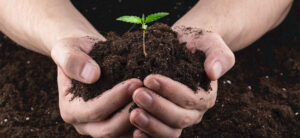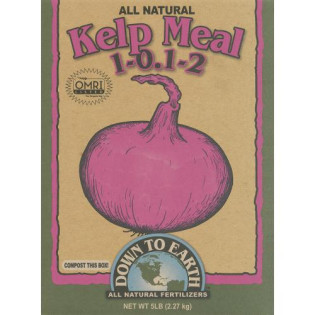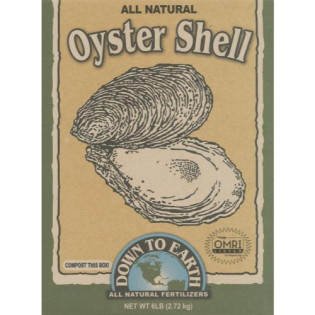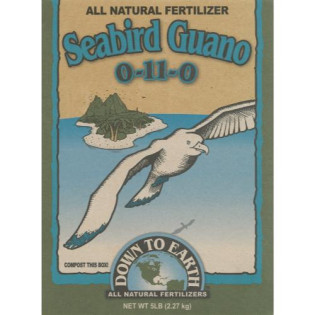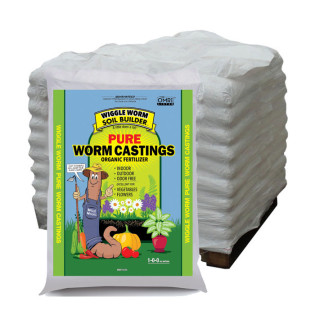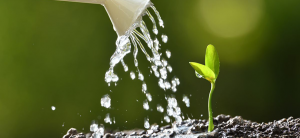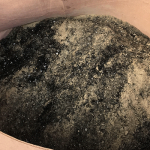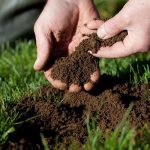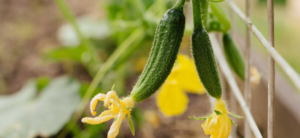
Growing organically can be very challenging, and that's why more and more growers are turning to a super soil recipe.
Super soil is a way to increase your success with organic growing, and allows growers of any skill level to achieve a heavy, plentiful harvest.
What is super soil?
The original idea was developed by Subcool, a world renowned grower. Super soil is a heavily amended organic soil, and provides plants everything they need at just the right times.
The idea is that if you mix your recipe correctly, you will not have to feed synthetic liquid nutrients throughout the plant’s life. Instead, you can simply water and occasionally top dress dry amendments during veg and bloom.
Using super soil simplifies the growing process by throwing feeding charts out the window, and mitigates the risk of under or overfeeding.
Simply follow a recipe, monitor the water you use for pH, and watch for deficiencies and address them with organic dry amendments as they come.
Can super soil be reused?
One of the great things about the super soil recipe we are going to show you is that the soil will last you a few years. The microbial life created in this process continues to work, and you can just top dress for veg or flower as needed.
You can either follow the no-till gardening method, and let your soil work on its own for years, or you can re-amend the soil at the end of each growing cycle.
Super Soil Recipe

This super soil recipe makes 100 gallons. You can easily manipulate the recipe to make less or more as needed. You can find all these amendments and supplements here at Hydrobuilder.com.
- 14 cu ft potting soil - This doesn’t need to be expensive, or nutrient rich. You just need a base soil, so get the cheap stuff! We will be adding all the nutrients your plants need.
- 25-50 lbs Worm Castings - Another option is to use half compost and half EWC.
- 5 lbs Blood Meal - This is a fast nitrogen source, and will make your plants grow big during veg.(12-0-0)
- 5 lbs Feather Meal - This is a slow, extended release nitrogen source, which will keep your plants supplied with nitrogen through their whole life. (12-0-0)
- 5 lbs Bat Guano - This organic fertilizer is a great way to improve absorption and soil structure, while providing plants a full macro and micr0-nutrient profile.
- 2.5 lbs Bone Meal - Excellent source of phosphorous and calcium for flowering.
- 2.5 lbs Fish Bone Meal - Do not use fish fertilizer if bears or dogs are an issue near your grow. It will attract them, so instead, double up on the Bone Meal.
- 3 cups Oyster Shell - High quality source of sustained release calcium.
- 3 cups Kelp Meal - Features a diverse micro-nutrient profile, with a fair dose of nitrogen and potassium.
- 2 cups Azomite - Helps round out the nutrient profile, fortifies and re-mineralizes soils.
- ¾ cup Epsom Salt - A natural bloom booster
- 2 Tbsp Mycorrhizae - This will help encourage rapid rooting.
How to make your own super soil

Making your own super soil is going to take some time, and hard work.
You will have to mix for a while, and then we recommend letting it compost a few months before using it. This allows the microbial life to get started.
Step 1 - Mix the first half of your soil recipe
First, you will need to lay down a tarp or a kiddie pool. Dump half your base soil in first, and spread it out. Then, mix in the first half of your amendments. Make sure to mix thoroughly before starting the second half of your soil.
Step 2 - Mix the second half of your soil recipe
Once you have stirred and mixed properly, you can add the second half of the soil and amendments.
At this point, get the super soil damp. This will start the activation process for the micro-organisms and amendments you just mixed together. Note that the soil should be damp, not soaked. Don’t over do it.
Step 3 - Compost your super soil recipe
Over the next week or two, you will need to come back to your super soil and mix it until you can no longer see amendments, and it has turned the same color uniformly.
Add it into large buckets or garbage cans, and get it damp. This will keep it contained and moist to begin the composting process.
Keep the super soil damp for the next 1-2 months while it cooks. This whole process is breaking down the amendments you added into a usable form for your plants. You will want to do one more good mixing right before you use it.
Step 4 - Prepare the super soil for planting
Before you plant, you will need to grab a light soil blend, such as a seed starter mix, to make a plug within the soil.
This will protect your young plants from nutrient burns from the hot super soil. Your plant will develop a strong root system and extend out into the super soil, and at this point it will be able to handle the nutrient heavy recipe you have made.
How to water your plants in super soil
Since you are not going to be feeding your plants liquid nutrients, you just need to water them regularly.
Give them just enough to wet the medium, and avoid producing much runoff.
Once you can feel that the soil is dry up to your first knuckle, it is time to water again.
If you are inexperienced, it is better to underwater.
If you create too much runoff with super soil, you will be washing away some of your nutrients.
Monitoring pH in this super soil recipe
If you have grown using liquid nutrients, you understand the importance of monitoring pH every day.
With organic growing, there is less work required for maintaining pH, but it should still be part of your daily checklist.
The organic ecosystem you created in your soil should be pretty maintenance free, but we still recommend using a soil pH meter regularly.
With dry organic amendments, it will take longer to correct imbalances, deficiencies, and toxicities. This is why it's important to regularly check your soil.
To lower pH organically, use lemon or vinegar, or General Hydro Pro pH Down. To raise pH organically, use baking soda, or General Hydro Pro pH up.
Dolomite Lime helps keep your pH consistent, and if you have issues, consider using it.





